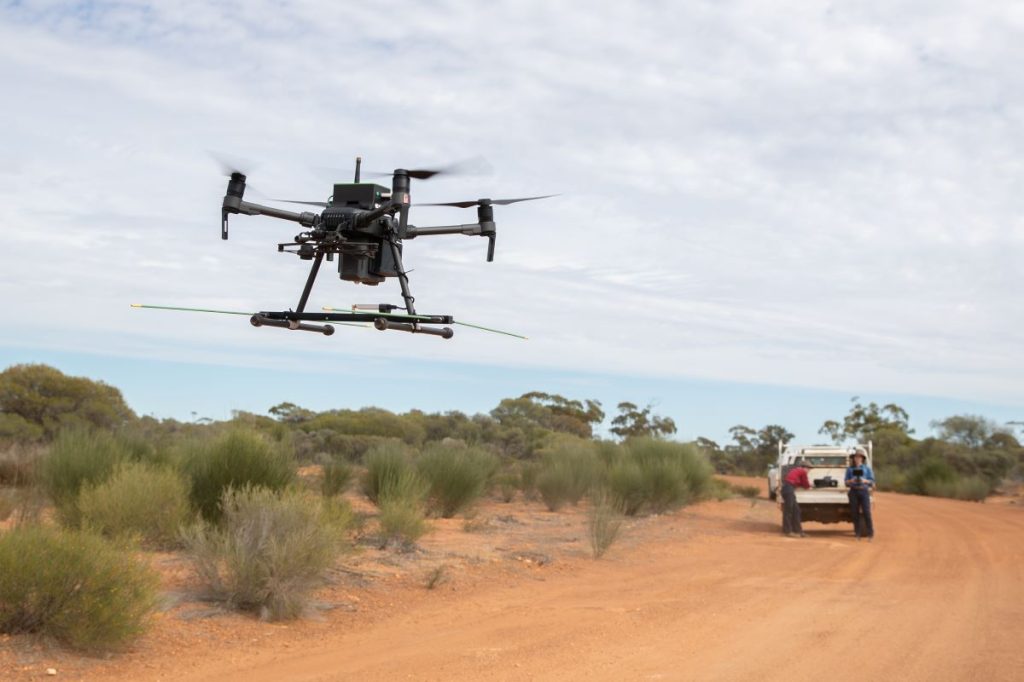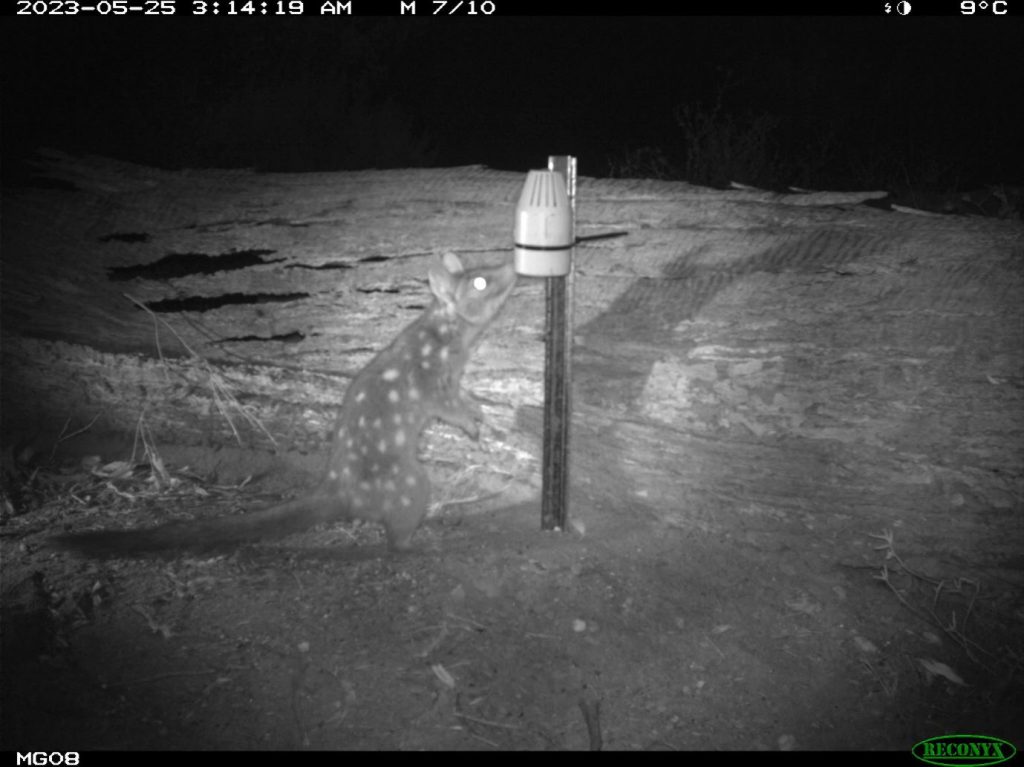
The unparalleled flexibility that comes with drones being able to carry a multitude of sensors, high-resolution cameras, and survey-grade mapping payloads has seen them being used for monitoring sensitive ecological areas and endangered species in several parts of the world. But a rather interesting case is now emerging from Australian Wildlife Conservancy (AWC) where the conservation organization has teamed up with Wildlife Drones to deploy a drone specially equipped with an advanced radio-telemetry system to track and monitor vulnerable wildlife species.
Earlier this year, western quolls — a carnivorous marsupial similar in size to a small domestic cat — were reintroduced to Mt. Gibson Wildlife Sanctuary in Western Australia. The species that once existed across nearly 70% of Australia in all states and territories now occupies only about 5% of its former range.
Prior to their release on the northern edge of the 131,800-hectare sanctuary, 16 of the quolls were fitted with VHF radio tracking collars. These collared individuals have since been tracked using a drone specially equipped with an advanced radio-telemetry system by Wildlife Drones. The drone is flown over the landscape and can detect multiple quolls simultaneously, enabling ecologists to monitor their movements.
Also read: All about RC 2, DJI’s new drone remote controller with a screen
AWC explains that the preparation on the ground started weeks ahead of the translocation. Four ecologists were taught how to fly the drone. And they also received training on how to interpret the data collected by the radio telemetry system.
Eight weeks after the first release of quolls, the drone has regularly picked up radio signals from 13 of the 16 collared individuals — an excellent result proving the value of this new method.

“In the past, tracking translocated animals has involved hours of walking and searching for collar signals,” says Sophia Callander, a senior wildlife ecologist at AWC. “The drone, on the other hand, has proven to be a great tool for detecting multiple signals and finding quolls in a much shorter time.”
Dr. Debbie Saunders of Wildlife Drones is quick to point out that theirs is the first drone sensor in the world to enable teams to radio-track many animals at the same time from the air and provide real-time data to teams on the ground. “This means the field team can now more easily monitor the quolls’ survival and movements as they roam across the extensive remote landscapes of the sanctuary,” says Saunders.

According to AWC, the quolls seem to have established well in their new home. The majority of the animals have stayed within their release area, although three of the males have been traveling larger distances and visiting neighboring properties. For the most part, the quolls have been easy to find, and trapping individuals has shown that they’re gaining weight as the breeding season continues.
Wildlife monitoring will now continue at regular intervals throughout the breeding season. Further, radio collars will be checked and adjusted as needed to observe the pouch status of the females.
Image courtesy: Australian Wildlife Conservancy
Read more: Air 3 vs. Mavic 3 Pro vs. Mini 3 Pro: DJI drones compared
FTC: We use income earning auto affiliate links. More.





Comments